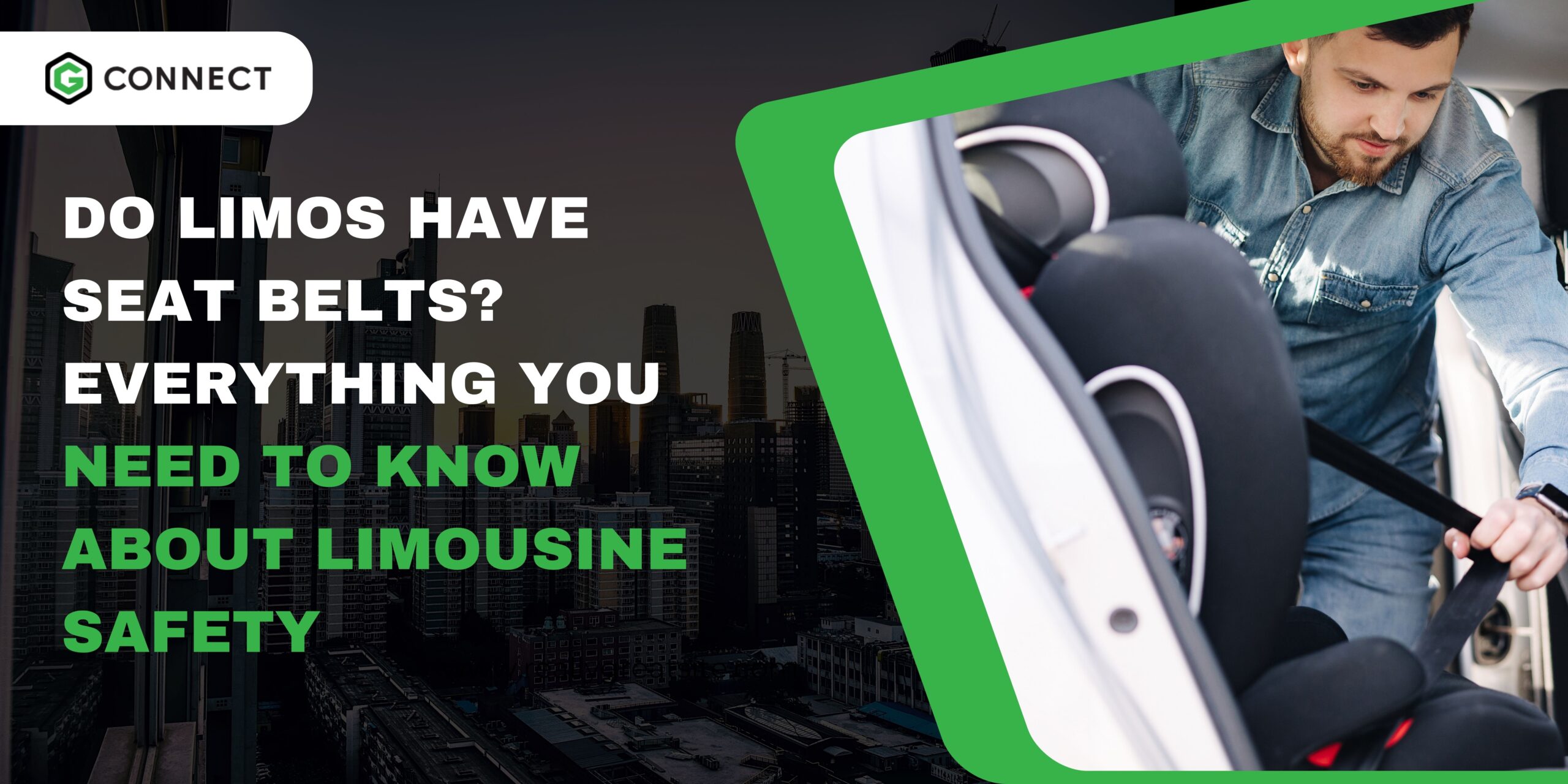Limousines are the epitome of luxury and style, often used for special occasions like weddings, proms, and corporate events. However, one of the most commonly asked questions about limos is, “Do limos have seat belts?” Given their unique design and purpose, it’s easy to overlook the safety features of these vehicles. Seat belts are essential for protecting passengers, but do they come standard in limousines? This article will explore the answer to this question, diving into the legal requirements, safety concerns, and best practices for riding in limousines.
Do Limousines Have Seat Belts?
Yes, limousines are equipped with seat belts, at least for the front seats. According to federal and state regulations in most countries, all passenger vehicles, including limousines, must have seat belts in the front seating area. However, the situation for limousine rear seats can be more complex.
In many older limousines, seat belts for rear passengers are only sometimes installed or readily visible. This is partly because limousines are often custom-modified vehicles prioritizing luxury and comfort over safety features. Many people don’t expect to use seat belts in limousines, especially since they usually sit in a spacious, lounge-style rear cabin.
Newer limousines, especially those manufactured after 2008, are likelier to have seat belts in front and rear passenger areas. With growing safety concerns and stricter regulations, limo companies increasingly ensure seat belts are available for all passengers.
Why Do Some Limousines Lack Seat Belts in the Back?
The absence of seat belts in the back of older limousines can be attributed to several factors, including:
- Customization and Modifications: Limousines are typically modified versions of existing vehicles. When a car is stretched to become a limousine, the original seat belt configurations may be altered or removed altogether. The focus during these modifications is often on enhancing the luxury experience, adding features like minibars, mood lighting, and entertainment systems rather than maintaining standard safety features.
- Perception of Safety: Limousines are generally perceived as safe due to their size, slow speed, and the professional driving expected of limo chauffeurs. This perception can sometimes cause passengers to overlook the need for basic safety measures like wearing seat belts.
- Laws and Regulations: Seat belt laws vary by state and country. In some places, seat belt use in the backseat of a vehicle is not legally required. Limousine companies may exploit these legal loopholes, leading to a lack of seat belts in the rear passenger areas.
However, safety experts recommend that all passengers, including those in the rear seats, wear seat belts to reduce the risk of injury in the event of an accident.
Are Seat Belts Legally Required in Limousines?
The legal requirements for limousine seat belts vary depending on the country or state.
- United States: Federal law mandates that all vehicles manufactured after 1968 must be equipped with seat belts. This typically applies to the front seats for limousines, while the laws regarding rear seat belts can vary by state. Some states, like California and New York, have stricter regulations that require seat belts for all passengers, regardless of where they are seated in the vehicle. Other states have more lenient laws, only requiring front-seat passengers to wear seat belts.
- United Kingdom: In the UK, all passengers in any vehicle are legally required to wear seat belts if they are fitted. This includes limousines, where rear passengers must use seat belts if available.
- Australia: Australia has similar regulations, requiring all passengers to wear seat belts if fitted in the vehicle, regardless of their seating position.
Even though laws may vary, safety experts universally agree that wearing a seat belt is one of the most effective ways to prevent injuries in the event of an accident.
Safety Concerns Without Seat Belts in Limousines
Limousines, like any other vehicle, can be involved in accidents. When passengers are not wearing seat belts, they are at a higher risk of injury, even in low-speed collisions. Here are some of the main safety concerns:
- Higher Risk of Ejection: In a crash, passengers without seat belts are more likely to be thrown from their seats. This can result in severe injuries or even fatalities.
- Impact with Interior Surfaces: Limousines are designed with luxurious, open interiors. Passengers sitting without seat belts may collide with other passengers, furniture, or entertainment systems inside the limo, increasing the risk of injury.
- Unforeseen Accidents: While limousines are often driven carefully by professional chauffeurs, accidents can still occur due to other drivers, weather conditions, or unexpected obstacles. In these situations, seat belts play a critical role in passenger safety.
Best Practices for Limousine Safety
Whether or not your limousine is equipped with seat belts in the rear, there are a few best practices you can follow to ensure a safe and enjoyable ride:
- Always Ask About Seat Belts: When booking a limousine, ask the limo company if their vehicles are equipped with seat belts, especially in the rear seats. If they are, encourage all passengers to use them, even if it’s not legally required.
- Ride Responsibly: Although limousines are associated with fun and luxury, acting responsibly inside the vehicle is essential. Avoid standing up while the car is in motion, and discourage passengers from moving around unnecessarily.
- Limit Distractions for the Driver: While limousines come with a partition between the driver and passengers, ensure the driver is not distracted by loud noises or unruly behavior from the backseat.
- Follow Local Laws: Ensure your group follows local seat belt laws and regulations. In some places, fines can be issued to passengers who fail to wear seat belts, even in the back of a limousine.
- Choose a Reputable Limo Company: Opt for a limousine company with a strong safety record. A reliable company will ensure that their vehicles are up to code and may even provide seat belts for all passengers.
The Future of Limousine Safety
As safety becomes a priority in the transportation industry, more limousine manufacturers and service providers are upgrading their vehicles to meet modern safety standards. Newer limousines are more likely to be equipped with seat belts in every seating position, and there is growing pressure on the industry to retrofit older limousines with better safety features.
In the future, we may see stricter regulations requiring all limousines to have seat belts in every seat and more advanced safety features like airbags and electronic stability control. For now, however, passengers must take responsibility for their safety by using seat belts and practicing safe riding.
Conclusion
While limousines are often seen as luxurious and fun, passenger safety should always be noticed. Most limousines come equipped with seat belts in the front seats, but rear seat belts may only sometimes be present, especially in older models. Regardless of legal requirements, it’s always a good idea to prioritize safety by using seat belts when available and choosing a limo service that emphasizes passenger safety. By being mindful of these factors, you can enjoy your limo experience with peace of mind, knowing that you’re taking the proper steps to stay safe.


Leave a Reply